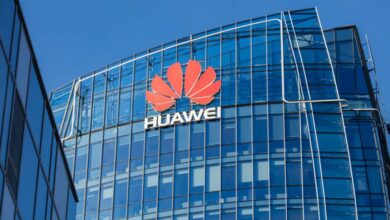How Binance uses three-party agreements with institutional investors

Catherine Chen, head of VIP and institutional investors at Binance, sat down for an exclusive conversation with Gadgets 360 during the recently held Binance Blockchain Week in Dubai. She highlighted the growing interest in crypto among institutional investors this year, largely driven by the US SEC’s approval of crypto ETFs earlier this year.
In September, Binance CEO Richard Teng announced that the exchange had seen a 40 percent increase in institutional investments this year. He also revealed that Binance had reached 200 million users in the first half of 2024, accounting for approximately 36 percent of the global crypto user base.
Speaking to Gadgets 360, Chen explained that the volatility of crypto assets continues to make investors reluctant to get involved. She noted that the main challenge for exchanges in gaining the trust of both large and small investors is the continuous research to identify the needs of potential users and develop services that provide customers with a sense of stability and confidence.
Binance’s Tripartite Agreement
After transitioning from the traditional financial ecosystem to cryptocurrencies, Chen noted that investors – especially high-net-worth individuals and corporations – feel safe working with well-known, established banks to manage their finances. However, she noted that this same level of trust is often missing in decentralized finance, which eliminates the role of intermediaries such as banks in transactions between parties.
“For example, let’s say an institutional client wants to open an account and start trading still needs to do a significant amount of due diligence. We work closely with our institutional clients to try to understand what their pain points are. This is when I usually mention the example of the Tripartite Banking Agreement that we introduced last year,” she said.
In this system, Binance, the institutional investor and banks reach an agreement as three individual parties.
“We then design and come up with a three-party bank, where we enable our customer to provide collateral in dollars or its equivalent to a bank. This remains in the customer’s name on separate, tailor-made accounts, okay with the bank and our balance sheet. We then give customers a loan so they can use it to trade on Binance.com,” Chen explains.
In systems like these, investors’ concerns about tying up money to a crypto exchange are addressed. The involvement of a bank ensures that investors have more confidence in the safety of their funds. Essentially, Chen suggested that while cryptocurrencies are starting to attract the attention of HNIs, they still prefer a layer of centralization, perhaps out of familiarity and habit.
“We’ve worked with a lot of institutional investors, and this is something that everyone among institutional investors wants. So again, this reduces friction and helps investors limit the counterparty risks they are concerned about. And again, it’s something that both crypto-native, large-scale, crypto-native institutional clients and the new asset manager or institutional clients want,” Chen points out.
The exchange declined to reveal the names of the lenders it works with to retain its large-scale investor clients.
To institutional investors and platforms that want to retain them as customers
In recent years, companies like Tesla and MicroStrategy have invested in crypto assets. Several other companies such as Apple and Microsoft have meanwhile refrained from adding crypto assets to their respective investment portfolios. Microsoft recently posted a feedback form asking its shareholders whether the company should include crypto investments on its balance sheets. As part of the board’s recommendation, the form asks users to vote against Microsoft when reviewing crypto investments.
In a suggestion to these companies, Chen said it is time to embrace technology.
“If there is a way to integrate Apple Pay with crypto payments very easily, that would greatly reduce so many friction points in transactions. Frankly, it’s a much more efficient settlement method where you leave out the middle partner. For large incumbents like Apple and Microsoft, if they are able to embrace the asset class in principle and recognize the value it brings, it will ease the overall journey of mass adoption,” the Binance official said.
The lack of reliable information about virtual digital assets (VDAs) makes educating investors a challenge for crypto companies, the Binance official said. When addressing the emerging exchanges and companies that want to deal with institutional investors, Chen said, the focus should first be on carrying out awareness initiatives.
In addition to the benefits of investing in crypto, the community needs to be educated about the risks and potential consequences that come with volatile assets like BTC, Chen said. She believes that the traditional finance ecosystem is now running on autopilot and supporting existing technologies.
In a message to potential investors, she said that crypto and blockchain will certainly be a big part of the future of the financial world – and the sooner people gain an accurate understanding of VDAs, the easier their transition to more advanced financial services will be.
However, the 2.4 million cryptocurrencies currently in circulation are highly sensitive to significant fluctuations due to industrial, economic, political or geographical changes, both on a macro and micro scale. Industry experts strongly recommend that potential investors conduct thorough research before engaging with crypto assets and platforms.




